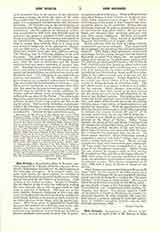

New Norcia, a Benedictine abbey in Western Australia, founded on March 1, 1846, by a Spanish Benedictine, Rudesindus Salvado, for the christianizing of the Australian aborigines. It is situated eighty-two miles from Perth, the state capital; its territory is bounded on the south and east by the Diocese of Perth, and on the north by the Diocese of Geraldton. This mission at first had no territory. Its saintly founder, like the Baptist of old, lived in the wilderness, leading the same nomadic life as the savages whom he had come to lead out of darkness. His food was of the most variable character, consisting of wild roots dug out of the earth by the spears of his swarthy neophytes, with lizards, iguanas, even worms in times of distress, or, when fortunate in the chase, with the native kangaroo. After three years of unparalleled hardships amongst this cannibal race, Salvado came to the conclusion that they were capable of Christianity. Assisted by some friends, he started for Rome in 1849 to procure auxiliaries and money to assist him in prosecuting his work of civilization. While in Rome he was appointed Bishop of Port Victoria in Northern Australia, being consecrated on August 15, 1849. Before he left Rome, all his people of Port Victoria had abandoned the diocese for the goldfields. Bishop Salvado thereupon implored the pope to permit him to return to his beloved Australian blacks. He set out for Spain, and obtained there monetary assistance and over forty young volunteers. All these afterwards became Benedictines. They landed in Australia in charge of their bishop on August 15, 1852.
Bishop Salvado, with his band of willing workers, commenced operations forthwith. They cleared land for the plough, and introduced the natives to habits of industry. They built a large monastery, schools and orphanages for the young, cottages for the married, flour-mills to grind their wheat, etc. An important village soon sprang up, in which many natives were fed, clothed, and made good Christians. On March 12, 1867, Pius IX made New Norcia an abbey nullius and a prefecture Apostolic with jurisdiction over a territory of 16 square miles, the extent of Bishop Salvado’s jurisdiction until his death in Rome on December 29, 1900, in the eighty-seventh year of his age and the fifty-first of his episcopate. Father Fulgentius Torres, O.S.B., was elected Abbot of New Norcia in succession to Bishop Salvado on October 2, 1902. The new abbot found it necessary to frame a new policy for his mission. Rapid changes were setting in; agricultural settlers were taking up the land, driving out the sheep and cattle lords, and absorbing the labor of the civilized natives. The mission had now to provide for the spiritual wants of the white population, and Abbot Torres boldly faced the situation by entering upon a large scheme of improvements in and around the monastery. With the approbation of the Holy See, he had the boundaries of the abbey extended to embrace the country between 30° and 31° 20′ S. latitude, and between the sea and 120° E. longitude—a territory of over 30,000 sq. miles (nearly as large as Ireland or the State of Maine). Abbot Torres brought out many priests and young ecclesiastics for the monastery and parochial work, and built churches in the more settled districts of his new territory. Since Abbot Torres became superior in 1901, the number of churches has increased from one to ten. To foster higher education, Abbot Torres has erected a magnificent convent and ladies’ college, and has in hand a similar institution for boys. He has already completed a large and commodious girls’ orphanage. All these works have been accomplished at the expense of the Benedictine community. Abbot Torres has not confined his energies solely to New Norcia. He founded the “Drysdale River Aborigines Mission”, 2000 miles away, in the extreme northwest of Australia, an unexplored land inhabited only by the most treacherous savages. This mission was opened on July 12, 1908, with a party of fifteen in charge of two priests.
Abbot Torres was consecrated bishop in Rome on May 22, 1910. On the fourth of the same month, by a Decree of the Propaganda, he was appointed administrator Apostolic of Kimberley, and had the “Drysdale Mission” erected into an abbey nullius. He has now under his jurisdiction a territory of 174,000 sq. miles—an area nearly as large as five important states of the United States—viz., Pennsylvania, Ohio, Indiana, W. Virginia, and Maine. The present position (1910) of the mission is: churches, 10; priests, 17 (secular, 7); monastic students, 9; other religious, 33; nuns, 18; high school, 1; primary schools, 4; charitable institutions, 2; children attending Catholic schools, 350; Catholic population, 3000.
JAMES FLOOD

